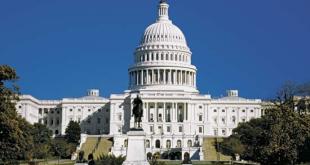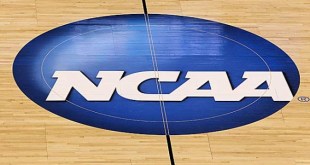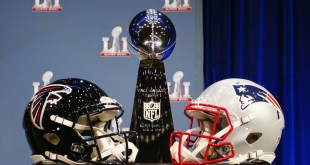The NFL filed its Deflategate Reply Brief to the Second Circuit on December 21, 2015. While the league mainly reiterated its previous arguments and responded to the NFLPA’s arguments, it also introduced a completely new argument in the last scheduled filing before oral arguments in March.[1] What was the argument, why did the NFL wait so long to make it, and what impact will it have on the case?
The NFL’s Argument
The background of this argument is a dispute over whether Tom Brady had notice of the potential discipline he could receive for his actions. Both parties agree that players need notice of potential discipline, they just disagree over how specific that notice must be and whether Brady actually received notice of this type of discipline.
On appeal the NFLPA defended Judge Berman’s finding that Roger Goodell ignored a more specific applicable policy relating to player equipment violations (or Uniform Policy) in favor of punishing Brady for general “conduct detrimental” to the league. In its reply brief, the NFL called this “an abrupt and revealing change of position.” The NFL argued as follows:
But Appellees [the NFLPA] fail to mention a fatal flaw in their argument: The Commissioner did not address the Uniform Policy in his decision because both parties took the position that the policy was inapplicable. Indeed, in proceedings before the Commissioner, Appellees affirmatively stated that the policy does not cover Brady’s conduct because balls are not part of the uniform or equipment worn by players. Specifically, in his opening statement, Appellees’ counsel said that they “don’t believe [the uniform] policy applies … because there is nothing here about the balls.” No one disagreed – for the understandable reason that, as explained below, the policy plainly does not apply to game balls.[2]
So the NFL’s point is that the NFLPA claimed before Goodell that the Uniform Policy relating to player equipment violations was inapplicable. The upshot of that, to the NFL, is this:
That dooms Appellees’ principal defense of the district court’s decision. To be sure, at the time, Appellees were contending that Brady’s conduct did not violate any League policy. But Appellees cannot argue before the arbitrator that the Uniform Policy is inapplicable, and then turn around and argue, in a collateral attack in federal court, that it is not merely applicable, but that it trumps the collectively bargained “conduct detrimental” provision. It is settled law that “permitting a party to oppose confirmation of an award based on a claim that it did not raise before the arbitrator would … offend the general principle that a party ‘cannot remain silent, raising no objection during the course of the arbitration proceedings, and when an award adverse to him has been handed down complain of a situation of which he had knowledge from the first.’”[3]
The NFL claims this is “a whiplash-inducing change of position”[4] requiring “considerable chutzpah” and “even greater temerity” to argue that Brady lacked notice of punishment under a policy his lawyers said was inapplicable.
What is interesting about this argument is that it’s the first time the NFL has ever made this point in the case. Goodell did not make it an issue in his decision. Daniel Nash, the NFL’s attorney at the district court level, did not make the argument in his filings or oral arguments before Judge Berman. Finally, the NFL did not make the argument at all in its opening brief to the Second Circuit. Yet, the NFL springs this new argument in its reply brief, spending six of its twenty-six pages of argument on the issue.
What the NFLPA Actually Said to Goodell
In his opening argument before Roger Goodell on July 23, NFLPA attorney Jeffrey Kessler said:
[T]here’s a player policy involving uniforms and things, which I will talk about…This is called League Policies for Players. This is what the players are given. And it’s interesting. It said “for players.” What is not in here is the competitive integrity rule that Mr. Wells used in his report or anything about that. So we looked through those League Policies For Players and said is there anything that could arguably be applicable to this?
Essentially, Kessler was looking for policies in which players received notice of discipline. He came across the Player Policies. And here’s what he said about them to Goodell:
And then it says “Other Uniform Equipment Violations,” okay. And it doesn’t mention balls at all, but I’m trying to be creative. Was there anything that could possibly apply to this? And what it specifically says under this thing is the first offense will be a fine. That’s what it says. This is Mr. Brady’s – we don’t believe it did anything, but this would be a first offense even if it came under this policy, which we don’t believe this policy applies either, because there is nothing here about the balls. And it’s clear Mr. Wells didn’t use this policy; he used the other one. But even this policy would have it.
The gist of Kessler’s point is that he was trying to find a policy that could have given Brady notice. He didn’t believe that any of the policies applied, but if any of them applied, he argued that the Player Policy on “Other Uniform Equipment Violations” most closely aligned with the offense, and it specifies a fine for a first offense.
Although he was somewhat unclear speaking off the cuff in the transcript of the hearing before Goodell, Kessler clarified his position in the NFLPA’s Post-Hearing Brief to Goodell:
The only NFL Policy that players receive that could even conceivably apply to Brady’s alleged conduct is contained in the Player Policies. The Player Policies identify punishments for equipment violations, including those aimed at gaining a competitive advantage, but provide only for modest fines – not suspensions as potential discipline.
Later in the same brief, Kessler expounded on the point:
[The Player Policies] identify player punishments for equipment violations that “affect the integrity of the competition and can give a team an unfair advantage” – such as putting stickum on receiver gloves – and subject first-time player offenders to a fine of $8,268 for a specified violation, or a $5,512 fine for violating a “catchall” provision for so-called “Other Uniform/Equipment Violations.” Even assuming a violation by Brady, the collectively bargained fine for a first-time offender is the maximum that Brady could be punished. There is simply no comparison between this modest level of fines for players who personally commit the violation and the devastating four-game suspension of Brady for purported “general awareness” of someone else’s violation.
At first you might think Kessler is being inconsistent here – that he’s arguing A) that the policy doesn’t apply, and B) if it does apply only a fine is appropriate. And you’d be correct that these are two mutually exclusive positions. However, it’s important to note that this sort of argumentation is standard legal practice, often called pleading in the alternative.[5] In the legal realm, there’s nothing wrong with putting forth two alternative defenses on one’s behalf, even if they might be inconsistent with one another.
What Happened before Judge Berman
The history of this argument only gets stranger when we look at the case before Judge Berman. In its Memorandum of Law to Judge Berman filed on August 7, 2015, the NFL wrote:
[T]he NFLPA argues that the Commissioner may not impose a suspension because the Union thinks that the Player Policy regarding “equipment violations” only put Brady on notice of a potential fine. But when the NFLPA made the same argument below, the Commissioner rejected it, finding “Mr. Brady had notice, and in fact was fully aware of, the established rule governing the pressure of NFL games [sic] balls . . . and [had] ample reason to expect that a violation of that rule . . . would be deemed conduct detrimental.”
So in August, its first chance to really argue before Judge Berman, the NFL conceded that 1) the NFLPA argued before Goodell that the equipment policy applied, and 2) the NFLPA argued before Judge Berman that the equipment policy applied. The argument remained the same at oral arguments before Berman. Here’s the transcript of an exchange between Berman and Kessler from the August 19, 2015 hearing:
Berman: So the direct question is: Can Mr. Brady be fined under the equipment section of the player policies in this case?
Kessler: He could be if the finding was not just generally awareness but the finding was that he actually participated in altering his equipment, then as a first-time offender he would be subject to the fine under the player policies.
When Berman issued his decision, he actually mentioned the exact point Kessler made to Goodell about the relevant policy at issue:
As a player, Brady was not provided with the Competitive Integrity Policy. Brady instead received the 2014 NFL League Policies for Players (“Player Policies”). Kessler contended:
This is called League Policies for Players [Player Policies]. This is what the players are given. And it’s interesting. It said ‘for players.’ What is not here is the competitive integrity rule [Competitive Integrity Policy] that Mr. Wells used in his report or anything about it…and it’s clear Mr. Wells didn’t use this [Player Policies]; he used the other one [Competitive Integrity Policy] . . . And by the way, the fine is $5,512 for the first offense. That’s it. That’s the only notice that a player has ever had about anything regarding equipment is in the [P]layer’s [P]olic[ies] . . . .
Later in his decision, Judge Berman found:
Brady was on notice that equipment violations under the Player Policies could result in fines. He had no legal notice of discipline under the Competitive Integrity Policy[.]”
Berman clearly bought Kessler’s argument on this point because he later ruled:
Goodell’s reliance on notice of broad CBA “conduct detrimental” policy – as opposed to specific Player Policies regarding equipment violations – to impose discipline upon Brady is legally misplaced…because an applicable specific provision within the Player Policies is better calculated to provide notice to a player than a general concept such as “conduct detrimental.”
Conclusion
So why exactly is the NFL making this argument? It seems clear that from the beginning the NFLPA has argued that if any policies apply to what Brady did, the uniform or equipment violations part of the Player Policies was most relevant and applicable. Once Judge Berman determined that the specific equipment violation policy applied, the union’s argument on appeal was pretty much the same as it was to Goodell and Berman – the application of such a policy requires fines for first offenses. This was hardly a new argument, much less a “whiplash-inducing change of position.”
The real question is why the NFL waited so long to bring up this argument. If the league really believed the NFLPA admitted that the player equipment violation policy did not apply, why didn’t Goodell address that in his decision in response to the NFLPA’s post-hearing brief? Why didn’t Daniel Nash argue that before Berman? Why didn’t the NFL make that case in its opening brief? Bringing up an argument that mischaracterizes the other party’s position in the last brief before oral arguments seems a dubious strategy. Was the NFL trying to prevent the NFLPA from having a chance to respond to the argument in writing by holding it until the last brief? Perhaps the league did not think of the argument until now and thought it would throw it in the brief and see if it stuck – the NFL did bring in new legal counsel specifically for the appeal after all. Maybe the league had overlooked that it had already conceded that the NFLPA argued this before both Goodell and Berman.
Whatever the reason, the argument is unlikely to have much actual impact on the appeal. This issue will come down to whether the Second Circuit believes Judge Berman inappropriately second-guessed Goodell’s authority to decide which policy to use when punishing Brady or if it believes Goodell improperly disregarded the essence of the collective bargaining agreement by choosing to punish under his Article 46 powers rather than the more specific equipment violation policy.
It’s clear that the NFLPA argued from the beginning that the equipment violation in the Player Policies was most relevant for Brady’s offense. Kessler argued essentially the same point to Goodell and Berman. Berman determined that the policy applied, and Kessler defended that ruling to the Second Circuit using a similar justification as he used earlier in the case. The NFL had ample opportunity to make this an issue earlier in the case and likely did not because there simply is not much to fight about here. Though the league may have audibled to a late blitz, it seems the other team already picked up the rush.
[1] For more about the previous arguments on appeal and where the case stands, read my Deflategate update.
[2] Internal citations within quotations have been omitted throughout this piece. Any emphasis within quotations is original to the source cited.
[3] Here the league cited to New York Hotel & Motel Trades Council v. Hotel St. George, 988 F. Supp. 770, 778 (S.D.N.Y. 1997) quoting York Research Corp. v. Landgarten, 927 F.2d 119, 122 (2d Cir.1991).
[4] You can tell the NFL has concussions on its mind lately.
[5] For example, Federal Rule of Civil Procedure 8(e)(2) states, “A party may set forth two or more statements of a claim or defense alternately or hypothetically, either in one count or defense or in separate counts or defenses. When two or more statements are made in the alternative and one of them if made independently would be sufficient, the pleading is not made insufficient by the insufficiency of one or more of the alternative statements. A party may also state as many separate claims or defenses as the party has regardless of consistency and whether based on legal, equitable, or maritime grounds.” (emphasis added)
 The Sports Esquires Putting Sports on Trial
The Sports Esquires Putting Sports on Trial





Thanks for the fascinating insight on the dubious logic (legal and otherwise) the NFL continues to peddle.
I think the NFL outsmarted themselves. The NFL’s argument is that the player uniform/equipment policy does not apply because footballs are not something a player wears. That in essence says that football tampering would be a team violation, not an individual violation. Taking that to it’s logical conclusion, that would mean only team sanctions would be appropriate, not individual player sanctions. That is exactly what the NFLPA argued, so the point the NFL spent so much ink on would seem to support the NFLPA’s argument.
thanks for being the first to putting my mind at ease. I was not sure if this old new junk would possibly work. Got your take from Steph Stradley’s twitter posts.
It isn’t even a 50/50 certainty that any balls were deflated and it’s only a guess that Brady might have known. The chance of Brady actually deserving a $5,000. fine is about 20%. The reason for suspending him for four games must lie somewhere else.